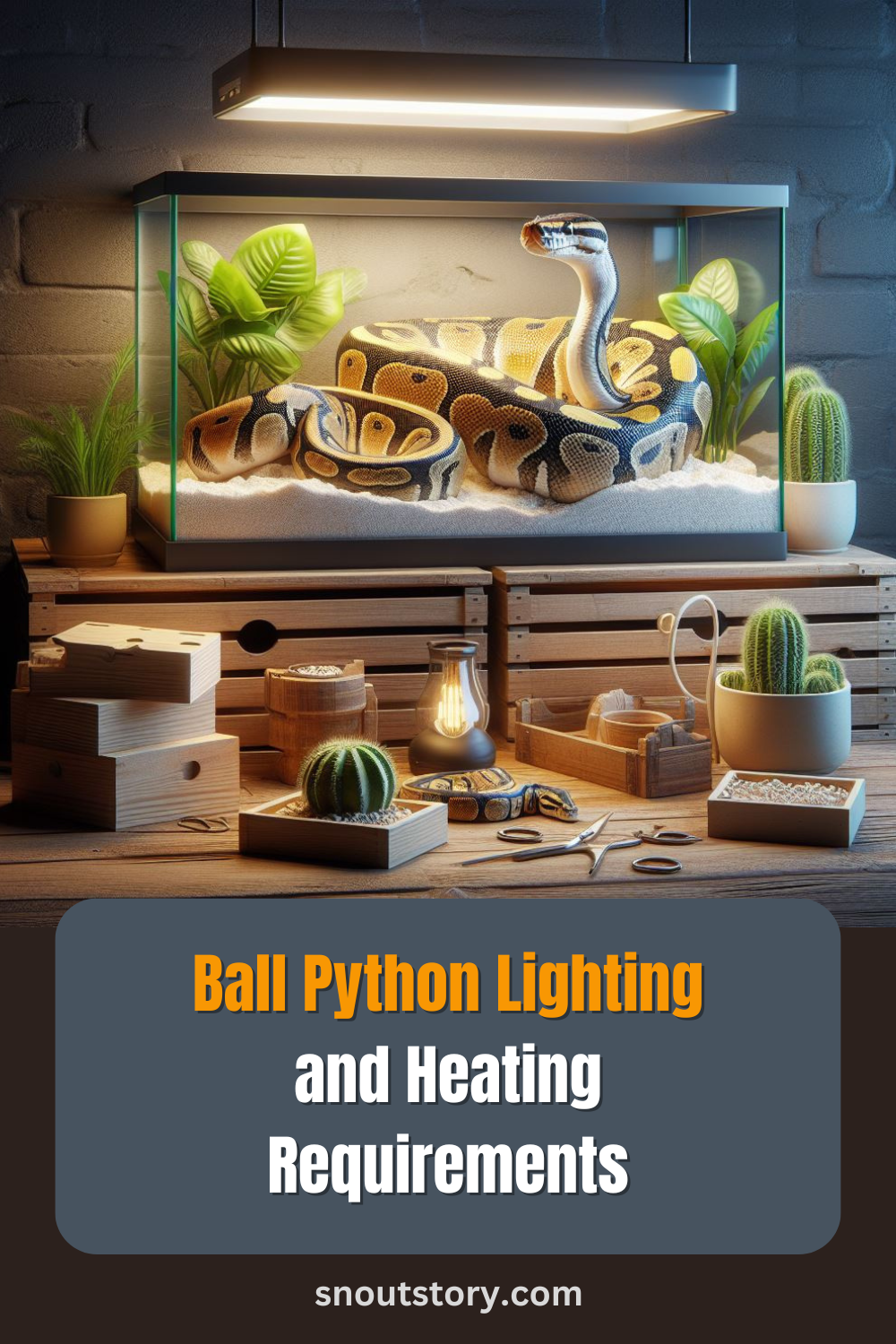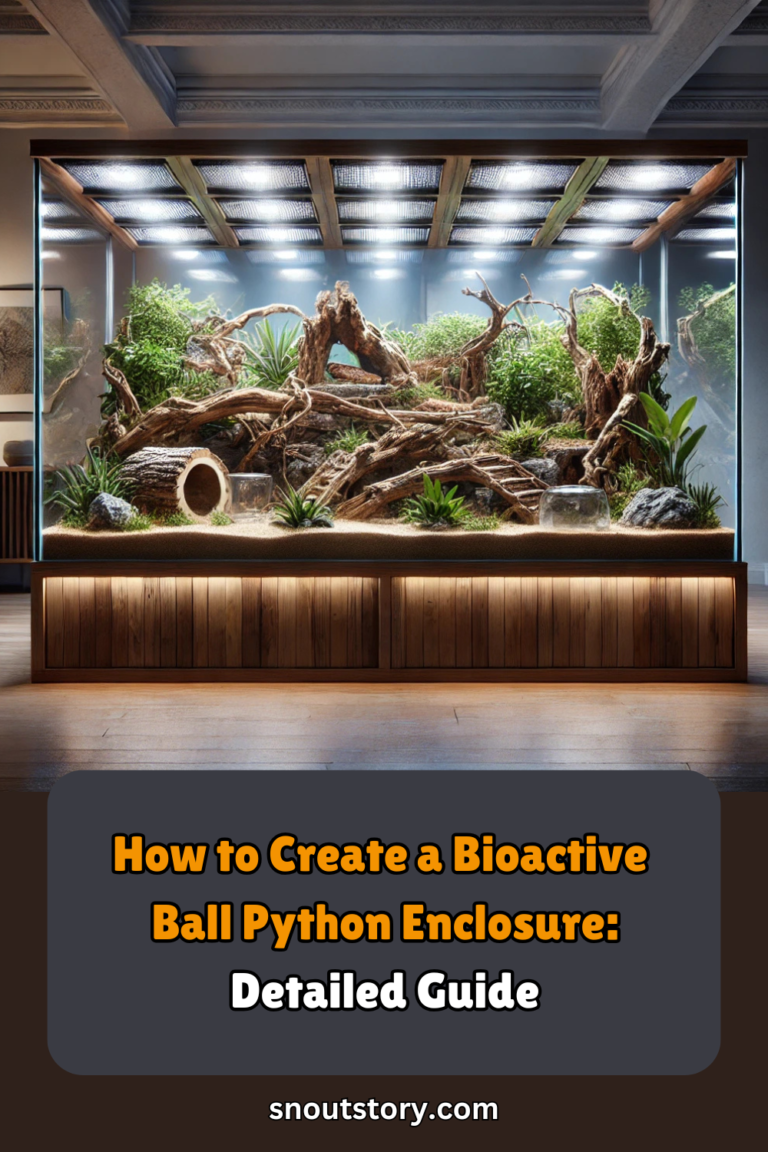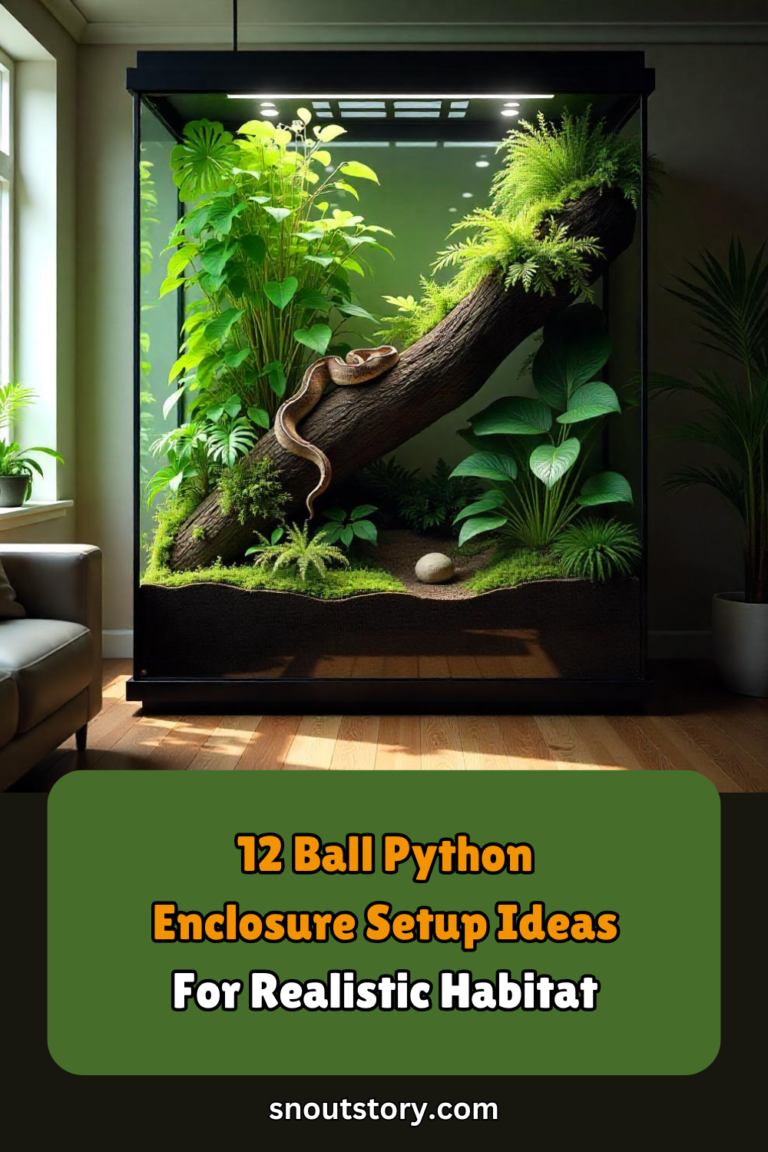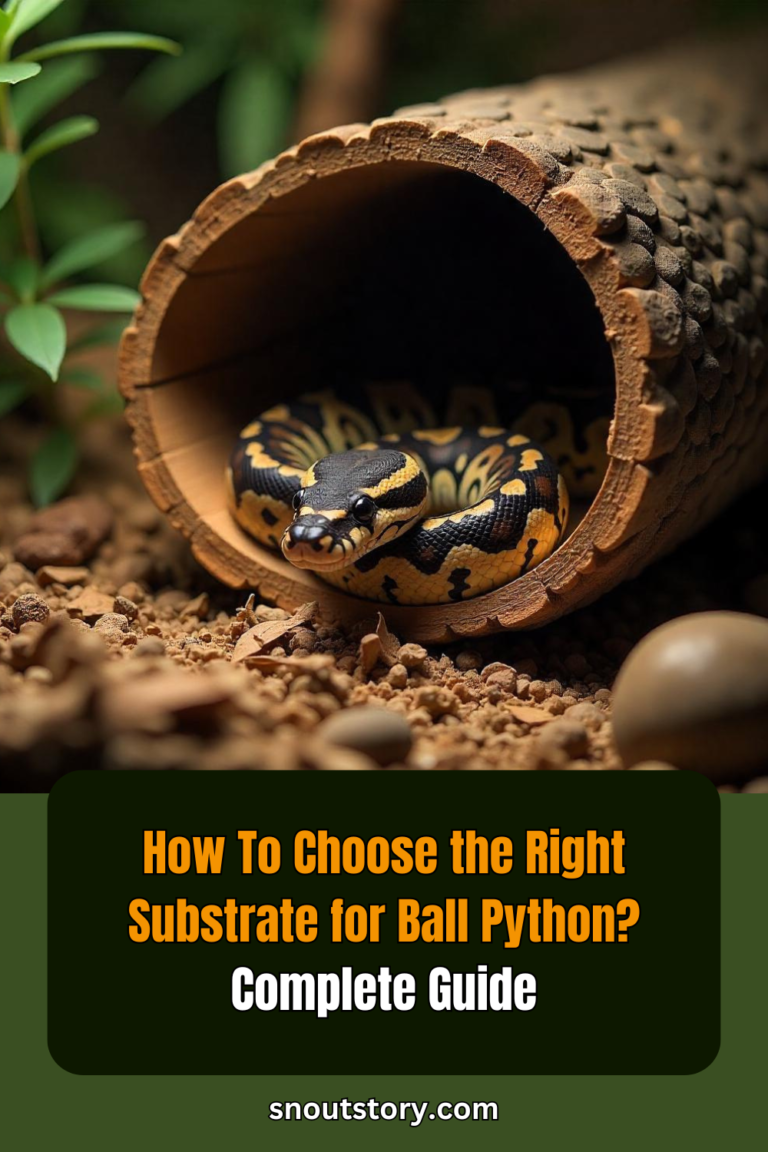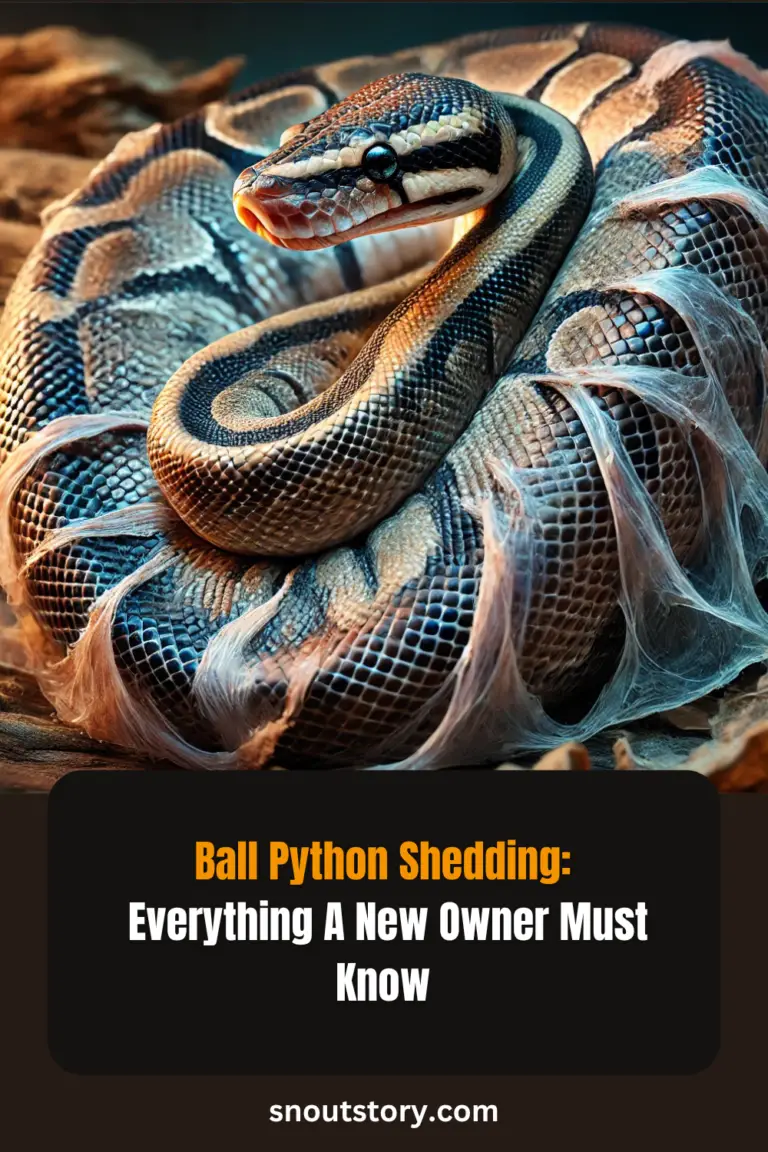Disclaimer
“This Blog is completely reader supported, for any purchase you make from affiliate links on this blog we earn a small commissions with no extra cost to you, which I use to feed my poor puppies 🥺”
Ball pythons, also known as Royal pythons, are a popular species of snake among reptile enthusiasts. One of the most important aspects of caring for these snakes is providing them with the proper lighting. Ball Pythons being cold-blooded animals require light to maintain body temperature and stable metabolism.
In this article, we will discuss the different types of lighting that can be used for ball pythons, as well as the specific requirements for each type.
Ball Python Natural Lighting Requirements
The first type of lighting that can be used for ball pythons is natural lighting. Natural lighting is the light that comes from the sun, and it is the most ideal form of lighting for these snakes. Ball pythons require a basking spot that reaches temperatures between 88-92 degrees Fahrenheit, and natural lighting can provide this heat. In addition, natural lighting also provides UVB light, which is necessary for the synthesis of vitamin D3 in the snake’s body.
It is important to note that natural lighting should only be used as a primary source of lighting if the enclosure is placed in a location that receives direct sunlight for a significant portion of the day, though excess direct sunlight should be not recommended as it can make your snake’s glass enclosure overheat. If natural lighting is not available, or if the enclosure is not in a location that receives direct sunlight, supplementary lighting should be used.
Ball Python Artificial Lighting Requirements
If natural lighting is not available or if the enclosure is not in a location that receives direct sunlight, artificial lighting should be used.
The primary reason for providing lighting to your ball python is for heating and to help them maintain a proper day and night cycle, so they don’t stress out and they remain mentally fit. The most common types of artificial lighting that can be used for ball pythons are:
- Incandescent bulbs:
Incandescent bulbs are the most common type of artificial lighting used for ball pythons. They provide both heat and visible light but do not provide UVB light.
- Mercury vapor bulbs:
Mercury vapor bulbs provide heat, visible light, and UVB light, making them the most ideal type of artificial lighting for ball pythons.
- UVB lamps:
Though most people believe that being nocturnal snakes ball pythons don’t need UVB light, and yes to a certain extent, they are right. But UVB lamps do more for reptiles than just helping in the synthesis of vitamin D3.
Guys there are many options of UVB lights out there, but from my own experience for my Turtle Tank, REPTIZOO Reptile Heat Lamp Bulb and UVB 10.0 Reptile Light Combo Pack is one of the best and affordable options which I would like to recommend.

Did you know that ball pythons can see ultraviolet rays?
Many researches and studies have provided that, though UVB is not necessary for ball pythons, still is can be important for their well-being in the long term and also their mental health.
Lighting Schedule
It is important to provide a consistent lighting schedule for ball pythons. A typical schedule would involve providing light for 12-14 hours per day, with the lights turning off at night. This mimics the natural light cycle that these snakes would experience in the wild.
A ball python’s lighting schedule should resemble the natural light cycle that they would encounter in the wild. Usually, lighting should be provided for 12–14 hours per day, with the lights being turned off at night. A timer can be used to control the lights so that they turn on and off at the same times every day to adhere to this schedule. I would suggest going with Zilla Reptile Pet Habitat Lighting & Terrarium Heat Power Center Timer or you can build one at your home for as low as $10.

Additionally, it’s crucial to keep in mind that while UVB light is essential, ball pythons also require a period of darkness to rest and recover. It is advised to switch off the UVB light at night and leave it on for 8 to 10 hours during the day.
It’s crucial to keep an eye on the enclosure’s temperature and humidity levels to make sure they’re within the right range for the species. This can be done by monitoring the enclosure’s temperature and humidity levels with thermometers and hygrometers and then making the appropriate adjustments.
Heating Requirements
Ball pythons require a specific range of temperatures to stay healthy and happy. For best thermoregulation, the enclosure should have a basking area that maintains temperatures of 88–92 degrees Fahrenheit (31-33 degrees Celsius). A heat source, such as a heat lamp or ceramic heat emitter, should be used to produce the necessary heat, and a thermometer should be used to measure the temperature of the basking area.
- Ceramic heat emitters:
Ceramic heat emitters, do not provide visible light but do provide heat. Though using ceramic heat emitters for longer durations is not suggested as it can cause burns to your snake.
LUCKY HERP 75W Ceramic Heat Emitter

- Heat Lamps:
Heat lamps are a common heat source used for ball pythons and other reptiles. They come in a variety of types and wattages, and it’s important to choose the right one for your enclosure. Incandescent bulbs are the most common type of heat lamp used for ball pythons, If you are a beginner this one will be perfect for you:
REPTI ZOO 100W Reptile Heat Lamp Bulbs Combo

- Heating Pad:
Ball pythons require a warm and comfortable environment to thrive, and a heating pad is an excellent way to provide that. Choose a heating pad that is designed for reptile use and place it under one side of the enclosure to create a temperature gradient. Here’s one of the best selling affordable heating pad on amazon:
Tikaton Reptile Heat Pad – Adjustable temperature Under Tank Heater

For the snake to thermoregulate, it is also crucial to provide a cooler area in the enclosure with temperatures between 78- and 82 degrees Fahrenheit (25 and 28 degrees Celsius). This can be managed by monitoring the temperature using a thermometer and modifying the heat source as required.
The enclosure must have a thermal gradient, which means that temperatures must vary across the enclosure. Since snakes need to thermoregulate, this enables them to move between hot and cool areas. Additionally, it’s critical to keep an eye out for any hotspots or regions that may be too cool in the enclosure as these conditions might affect the snake’s health.
It’s also important to consider the ambient temperature in the room where the enclosure is located, as this can affect the enclosure’s temperature. To prevent overheating or overcooling of the enclosure, the room temperature should be between 72- and 78 degrees Fahrenheit (22 and 25 degrees Celsius).
Summary
In conclusion, providing the proper lighting for ball pythons is essential for their health and well-being. Natural lighting is the most ideal form of lighting, but if it is not available, artificial lighting can be used.
Incandescent bulbs, ceramic heat emitters, and mercury vapor bulbs are the most common types of artificial lighting used for ball pythons. A consistent lighting schedule should be maintained, mimicking the natural light cycle that these snakes would experience in the wild.
Recommended
How to Create a Bioactive Ball Python Enclosure: Detailed Guide
12 Ball Python Enclosure Setup Ideas For Realistic Habitat
How To Choose the Right Substrate for Ball Python? Complete Guide
Ball Python Shedding: Everything A New Owner Must Know
Why Is My Ball Python Not Eating? And How To Fix It!
How To Breed Ball Python – A Comprehensive Guide

Vedant Narvekar is an experienced digital marketing expert with a profound love for nature and animals. With a career rooted in leveraging online platforms to drive engagement and promote meaningful causes, Vedant’s passion for animals inspired him to start Snout Story—a blog dedicated to educating people about pet keeping and sharing proper knowledge about caring for animals. Drawing on his expertise in digital marketing, Vedant utilizes his platform to advocate for responsible pet ownership, providing valuable insights on pet care, training, nutrition, and more. Through Snout Story, Vedant aims to empower pet lovers with the information they need to provide the best possible care for their furry companions, while also fostering a deeper appreciation for the natural world and the creatures that inhabit it.

